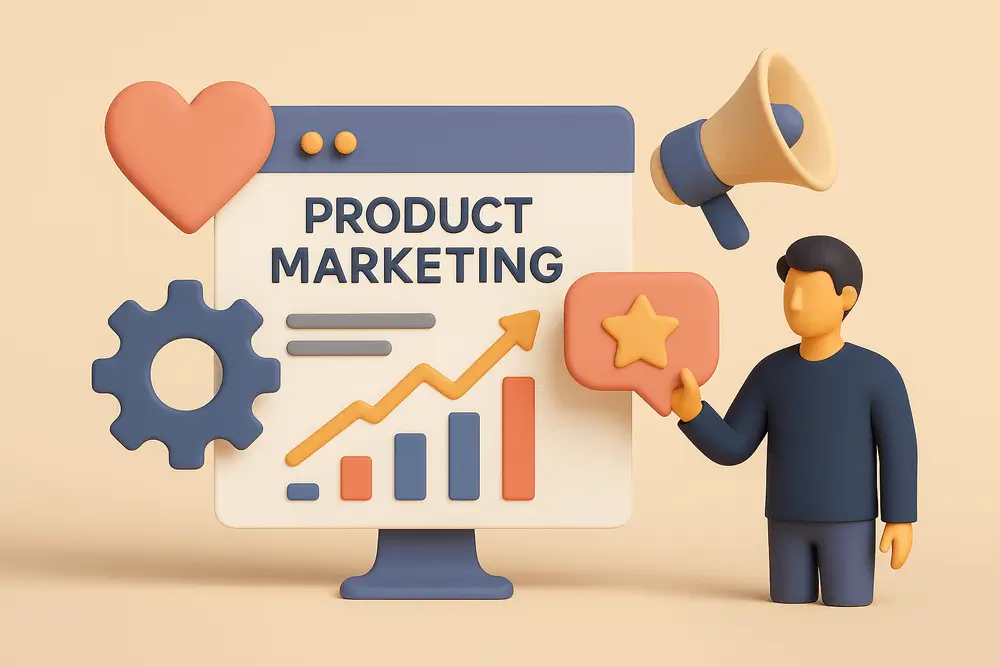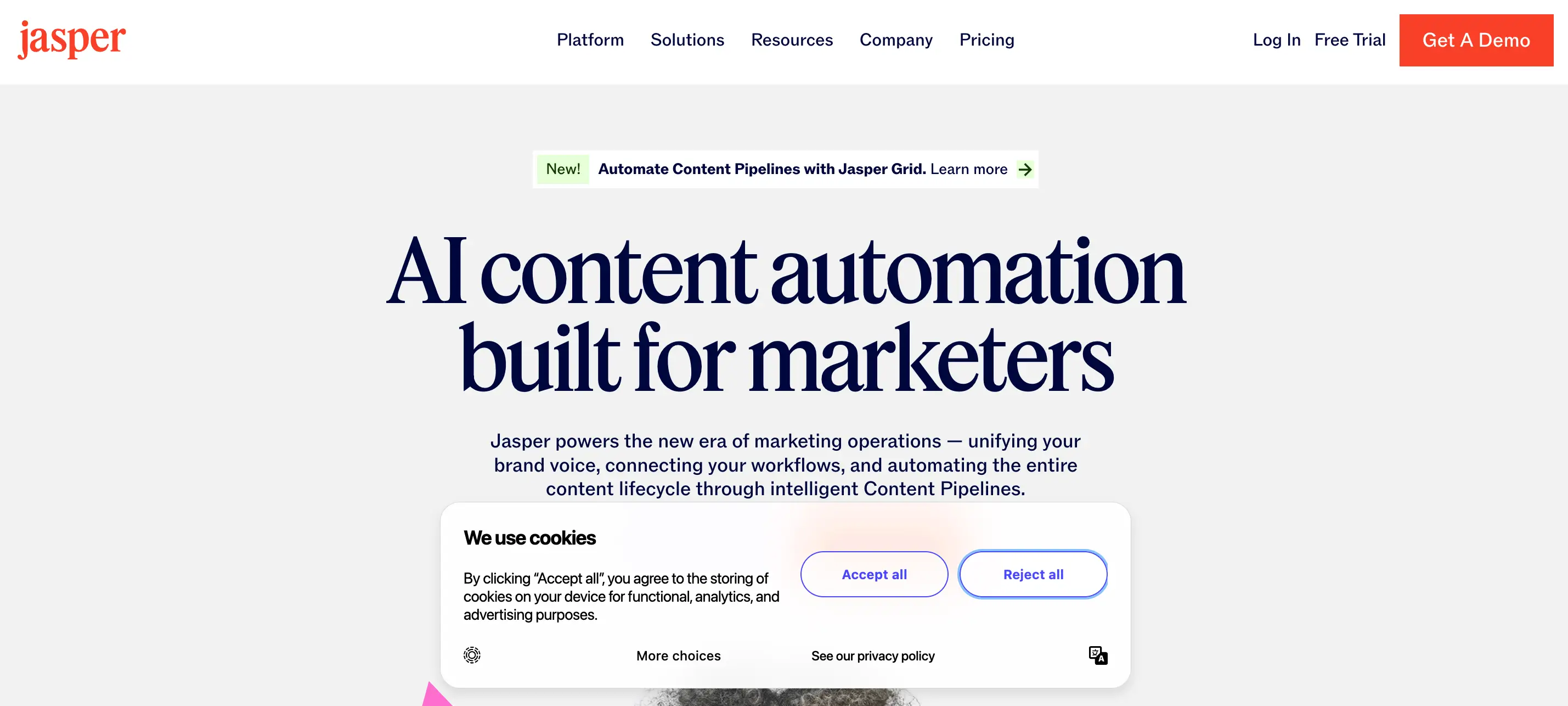Product Marketing: From Positioning to Launch
Product Marketing
Jul 21, 2025
0 min
Bringing a great product to life is more than building it; it’s about connecting it with the right audience at the right moment. That’s where product marketing comes in.
Product marketing sits at the intersection of product, sales, and customer success. It's responsible for how a product is positioned in the market, how it's communicated to users, and how it's ultimately adopted and embraced. From crafting compelling messaging to driving go-to-market plans, product marketers play a critical role in shaping how people perceive and experience a product.
In this article, I’ll explore the full journey of product marketing, from developing a strong foundation with strategy and differentiation to launching with impact. Whether you're marketing a new feature, repositioning an existing product, or preparing for a major release, this guide will give you a structured marketing approach to get it right.

What Is Product Marketing?
Product marketing is the process of bringing a product to market and guiding its success through positioning, messaging, and user engagement. Unlike general marketing, which often focuses on brand awareness and lead generation, product marketing is directly tied to the product's lifecycle. It connects product development with the market by translating features into value and ensuring the right people understand and adopt it.
A product marketer’s role includes defining the target audience, crafting compelling messaging, supporting the sales team, and driving go-to-market plans. They also gather feedback after launch to improve the product or inform future updates.
What makes product marketing unique is its focus on both the product and the customer. It requires a deep understanding of the product’s capabilities, the competitive landscape, and what motivates buyers to act. This dual perspective helps shape more effective campaigns and strategies that result in better product adoption and long-term growth.
Building a Product Marketing Strategy
A strong marketing strategy lays the groundwork for how your product will be positioned, promoted, and received by your target audience. It ensures that every step— from early planning to post-launch messaging— is aligned with customer needs and business goals.
Here are the key components of an effective product marketing strategy:
1. Market Research
Start by understanding the landscape. Analyze competitors, trends, and customer pain points. This insight helps define how your product fits into the market and what makes it unique.
2. Audience Segmentation
Identify your ideal customer profiles and segment your audience based on behaviors, needs, or use cases. Tailored messaging begins with knowing exactly who you’re speaking to.

3. Messaging and Positioning
Craft a clear value proposition that highlights the core benefit of your product. The messaging should resonate with your audience and distinguish your offering from competitors.
4. Go-to-Market Planning
Outline how you will introduce the product to users. This includes launch timing, promotional tactics, channel selection, and internal coordination between teams.
5. Sales Enablement
Equip your sales team with the tools and messaging they need. This might include battle cards, pitch decks, demo scripts, and objection-handling guides.
6. Post-Launch Optimization
Continue gathering user feedback, monitoring performance, and refining the message. Product marketing is an ongoing process, not a one-time launch event.
An effective product marketing strategy serves as a roadmap, helping align internal teams and keep the focus on delivering value to the customer at every stage.
Key Strategies in Marketing a Product
No matter how great a product is, it won’t succeed without the right strategy to connect it with the right audience. Effective strategies in marketing a product help turn interest into adoption and differentiate your offering in a competitive market.
Here are several proven strategies to consider:
1. Educate Through Content
Create blog posts, videos, and guides that explain how your product solves specific problems. This builds trust and helps potential customers see the value before they even try it.
2. Leverage Social Proof
Use customer testimonials, reviews, and case studies to build credibility. Real success stories speak louder than marketing claims.
3. Run Launch Campaigns
Coordinate a multi-channel campaign when introducing new features or a full product release. Combine email, social, ads, and product-led content to create momentum.
4. Offer Product Tours or Free Trials
Interactive experiences give users a hands-on feel for your product’s value. A guided tour or trial can often convert better than any sales pitch.
5. Partner with Influencers or Communities
Tap into niche communities or creators your audience trusts. Strategic partnerships can bring exposure to new user groups quickly.
6. Align with Sales and Support
Consistent messaging across marketing, sales, and customer service helps deliver a seamless experience. Equip teams with the right information and tools.
These strategies in marketing a product are most effective when they align with your audience's needs and preferences. Whether you’re launching a new tool or updating an existing platform, success depends on clear communication and meaningful engagement.
Product Differentiation Strategies in Marketing
In crowded markets, having a solid product isn’t enough - you need to stand out. That’s where product differentiation strategies in marketing become essential. These strategies help you highlight what makes your product unique so that potential customers choose it over others.
Here are some common and effective ways to differentiate your product:
1. Functional Differentiation
Emphasize features or capabilities that competitors don’t offer. This could be speed, integration options, ease of use, or automation that saves time.
2. Emotional Differentiation
Connect with customers on a personal level. Brands that evoke trust, creativity, or empowerment can leave a stronger impression than purely functional solutions.
3. Brand-Based Differentiation
A strong, recognizable brand voice, user-centered design, and personality can set your product apart. Consistency across your website, messaging, and support channels builds familiarity and trust.
4. Price-Based Differentiation
Positioning your product as a premium or budget-friendly solution can attract different segments of the market. Just be sure the value you offer matches the price.
5. User Experience Differentiation
If your product is easier or more enjoyable to use, that’s a powerful differentiator. Simple interfaces, smooth onboarding, and clear documentation can be selling points.
When crafting product differentiation strategies in marketing, always align your message with what your audience values most. Differentiation is not about listing every feature—it’s about spotlighting the right ones in the right way.
From Positioning to Launch
Once your strategy and differentiation are in place, the next step is turning your messaging into action. The transition from positioning to launch is where product marketing becomes highly visible, and highly impactful.

1. Define Your Product Positioning
Product positioning is the foundation of your marketing narrative. It defines who your product is for, what problem it solves, and why it’s better than alternatives. This message should guide everything from your website copy to your sales pitch.
Use frameworks like:
- Value proposition canvas
- Competitive comparison charts
- Elevator pitch templates
2. Align Your Teams
Product, sales, support, and marketing should all understand the positioning and key messages. Consistency ensures your launch feels cohesive to your audience, no matter the touchpoint.
3. Plan a Multi-Phase Launch
A successful product launch doesn’t happen in one day. Structure your efforts across three phases:
- Pre-launch: Build anticipation with early access programs, teaser content, or a waitlist
- Launch: Announce the product through blog posts, email campaigns, social media, and webinars
- Post-launch: Continue engaging your audience with tutorials, updates, and user success stories
4. Use Multiple Channels
Tailor your message across channels where your audience spends time. That could include email, product communities, your blog, or paid ads. Reuse and adapt assets to increase visibility and reinforce your product’s core message.
5. Monitor and Adjust
After launch, measure what’s working. Track engagement, signups, and feedback to fine-tune your campaigns and product roadmap.
Launching a product is more than a one-time event. With strong positioning and careful execution, product marketing helps turn momentum into long-term adoption.

Conclusion
Effective product marketing bridges the gap between building a great product and getting it into the hands of the right users. From shaping positioning and messaging to launching with purpose, every stage plays a role in driving adoption, engagement, and long-term success.
Whether you're developing your first product marketing strategy or refining your approach with more advanced product differentiation strategies in marketing, the goal remains the same - connect your product’s value to the people who need it most.
Need Help Bringing Your Product to Market?
A strong product marketing strategy works best when it’s supported by thoughtful design and consistent branding. Whether you’re launching a new product or repositioning an existing one, I offer branding, website design, and web development services that help translate your strategy into a compelling digital experience.













